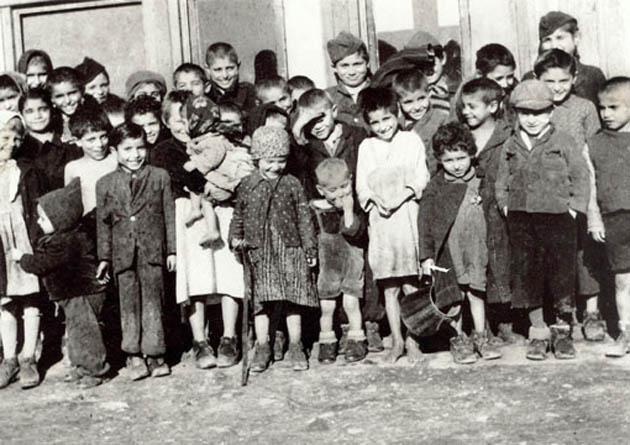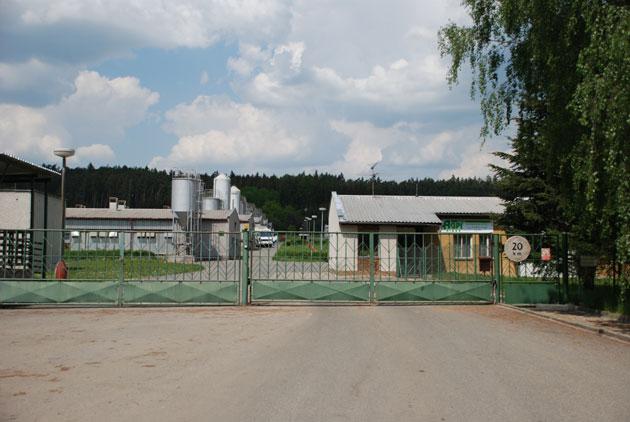Analysis: The Lety Romani Holocaust site as a "Gestapo concentration camp"

The year 2016 has brought us absolutely new arguments in favor of removing the pig farm from the Romani genocide site at Lety. More than 70 years have passed since the end of the Second World War.
Czech politicians keep analyzing whether the camp at Lety was “Czech”, “German”, “Romani”, a “labor” camp, an “internment” camp or, from the perspective of the victims, a “concentration camp”, but hardly anybody notices that this year another groundbreaking work was published on this topic that provides an absolutely new perspective on it. Up until 1994 almost nobody suspected a camp had existed in South Bohemia where, during a brief time period, hundreds of people, mainly children, had perished.
The first study of Lety published by Ctibor Nečas, the only Czech historian involved in thoroughly documenting the history of the camp, was ignored by the Czech Government and media. This meant that the history of the camp was de facto kept hidden from the public.
In 1960, camp survivors installed a memorial plaque with the names of the victims of Lety on the wall of the cemetery in Mirovice, where other camp victims had been buried in pits. Later they also erected a wooden cross near the mass burial grounds by the former camp which, because of a lack of interest on the part of the Czech Government and local auhtorities, disappeared during the 1990s.
New perspective reveals the camp history
In 1994, the American author Paul Polansky sparked a scandal in the Czech media, and the then-President of the Czech Republic, Václav Havel, unveiled a small memorial one year later at Lety in the form of a fragmented sphere. The President gave a speech presenting the official perspective on what transpired in the camp: “They perished because of horrible accommodation and hygiene conditions, lack of food, exhausting labor, and primarily as a consequence of the typhus epidemic.”
Havel took this formulation from the work of Nečas, who repeatedly called the suffering of the Lety prisoners a “tragedy”, not a component of the genocide of Romani people. The Czech Government’s plans to erect a more dignified memorial at the site, which is currently occupied by a foul-smelling pig farm, have regularly been postponed ever since with reference to the belief that state money should be used for something else.
Moreover, it has been asserted that the Lety camp was just one of about 2 000 such camp facilities operating during the Nazi era on the territory of the Czech lands. The numerous testimonies of the surviving former prisoners published in 1998 by Polansky were received with scepticism by the Czech public.
Doubts were raised about Polansky’s methodology – he had not made any audio or video recordings of the interviews, but had used an interpreter and taken his notes in English, then had the interviews translated back into Czech for publication. What if he had added something to them, or left something out?
According to police historian Petr Klinovský, the newly-published book by historian Jan Tesař called Bohemian Gypsy Rhapsody (Česká cikánská rapsodie, published by Triada, Prague 2016) is now the best and most reliable eyewitness testimony to be published about the Lety camp. In this memoir, Josef Serinek, a former Lety prisoner, describes life in the camp, for example, like this:
“That afternoon our radios summoned us to convene, we all had to be present. A gallows had been erected and a girl was tied to it. She had been out with us collecting wood, picked herself some blueberries and got lost. The gendarmes looked for her and apprehended her. When we assembled, she was tied up there like Christ on the cross, I was about 40 paces away from her. It was as silent as the tomb as the gendarmes read out a message that this would happen to anybody who attempted to escape. My Dad and my Mom shouted that she hadn’t run away, but that didn’t help. She was about 16, she was already absolutely covered in blood and bruises, her hair had been torn out. When they finished reading the message that this was the fate that awaited any of us, another gendarme arrived carrying a length of rawhide, and he had two convicts with him, each carrying a piece of rubber and bucket of water, and they began to beat her some more until she dropped, then they untied her and she fell over like a sack. There were about 40 gendarmes ouside watching all the people. When she was on the ground they poured water over her, she recovered, they let her lie still a bit, and then two grabbed her by the hands and dragged her along the ground and put her into the vehicle with the bars on the windows – and nobody ever saw her again.” (Volume 1, pp 53-54).
Tesař points out that Serinek explicitly mentions, twice, the exact number of prisoners executed by the Lety guards during the six weeks he stayed at the camp: 17. This testimony by a former prisoner – who after his escape from the camp became a significant commander of a shock troop unit as part of the military section of the Second Resistance, and who after the war was given military honors for that service – directly contravenes the historical research done by Nečas.
According to Nečas, no executions of prisoners ever happened at Lety. Now it will depend on whether the community of historians considers this new work by Tesař a reliable contribution to the history of the camp.
Czech society just beginning to cope with the murder of Czech Roma by the Nazis
Klinovský, in his own study called Lety by Písek: The Unknown Story of the Guards (Lety u Písku. Neznámý příběh dozorců) quotes the testimony of Josef Koudelka, a former camp guard, which was documented in the files of the commission tasked with cleaning up the Lety camp, as follows: “What was necessary here was a strictness so that we, as the guard staff, could endure it, but we would have been able to proceed humanely as far as the meals, medical treatment, accommodation, etc., were concerned, and it wasn’t necessary to let the entire camp decline to the level of a Gestapo concentration camp.”
His study also reviews the question of which authorities wielded primary influence over what happened in the camp as follows:
“From 16 August 1942 to 23 April 1943, the official records show that 327 prisoners died at Lety out of 1 309 inmates. Of those, 101 victims were children aged three and younger. The vast majority of prisoners who managed to survive the inhumane conditions of the Lety camp ended up in transports to the Auschwitz concentration camp, which meant an all but certain death. While the Protectorate authorities were not to blame for those death transports, the camp at Lety by Písek was, immediately from its creation in 1940, in all aspects under the de facto influence of the Protectorate authorities and bureaucrats, and each victim was, therefore, not just a victim of the Nazi machinery, but also a victim of the Protectorate administration.”
Tesař concludes his recently-published historical work with these words:
“Czech society’s coping with the fact of its complicity in the almost absolute extermination of Czech Roma by the Nazis has only just begun. What awaits society is the question of whether this Gypsy Rhapsody will negate the idea of the nation, or provoke it to crystallize into an even purer form. My wish, absolutely in the spirit of [Czech historian] Palacký, is that the outcome not be self-negation, but that the nation recover from it, because that is necessary. The nation must now recover, despite all of the ignoring to date of this aspect, all the desire to wash away those silent partners of the Nazis, stubbornly repeating again and again that the Nazi genocide of the Czech Roma was facilitated by the so-called ‘autonomous’ (Protectorate) representation and its authorities through a cult of absurd efficiency in ‘working for the homeland’ – in the interest of the occupiers – behind which lay the ‘Protecorately’-perverted concept of the Czech nation itself. In response to this, I second the merging of Czech-ness with the challenge to thoroughly conceive of our national identity such that it naturally includes Romani people too, just like all the cultural entities who have historically contributed to the creation of the Czech-Slovak cultural and poltiical context, which doubtless exists and is a unique cultural and political reality despite all of the vagaries of putting our paltry policies into practice… . Let’s revive the legacy of the Resistance by taking it to its logical conclusion, by overcoming this biased, language-based, narrow-minded, petty concept of a nation. Our very own history leads us to comprehend that language is just one of the components of the cultural and political context that creates a nation. Coming to our senses about all of this is necessary, and it begins with acknowledging that the genocide of the Czech Roma brought about not just immeasurable suffering and the death of thousands of our fellow human beings, but also inflicted a heavy cultural damage on our centuries-old natural cultural context , damage that has become our common misfortune and has harmed all of mankind; an extension of this idea is therefore (for me, udoubtedly)… the dual nation, Czech-Slovak, in a new conceptual whole that includes all the richness of its parts.”
If the Czech Government is sincere about its plan to replace the industrial pig farm at Lety with a dignified memorial to the victims of Nazism, then it should take note of these new historical findings and use them to advocate for that plan. Historians should now rewrite the official analysis of the history of the Lety camp and clarify whom the “Protectorate” Government was supposed to be protecting – and who it did not.
